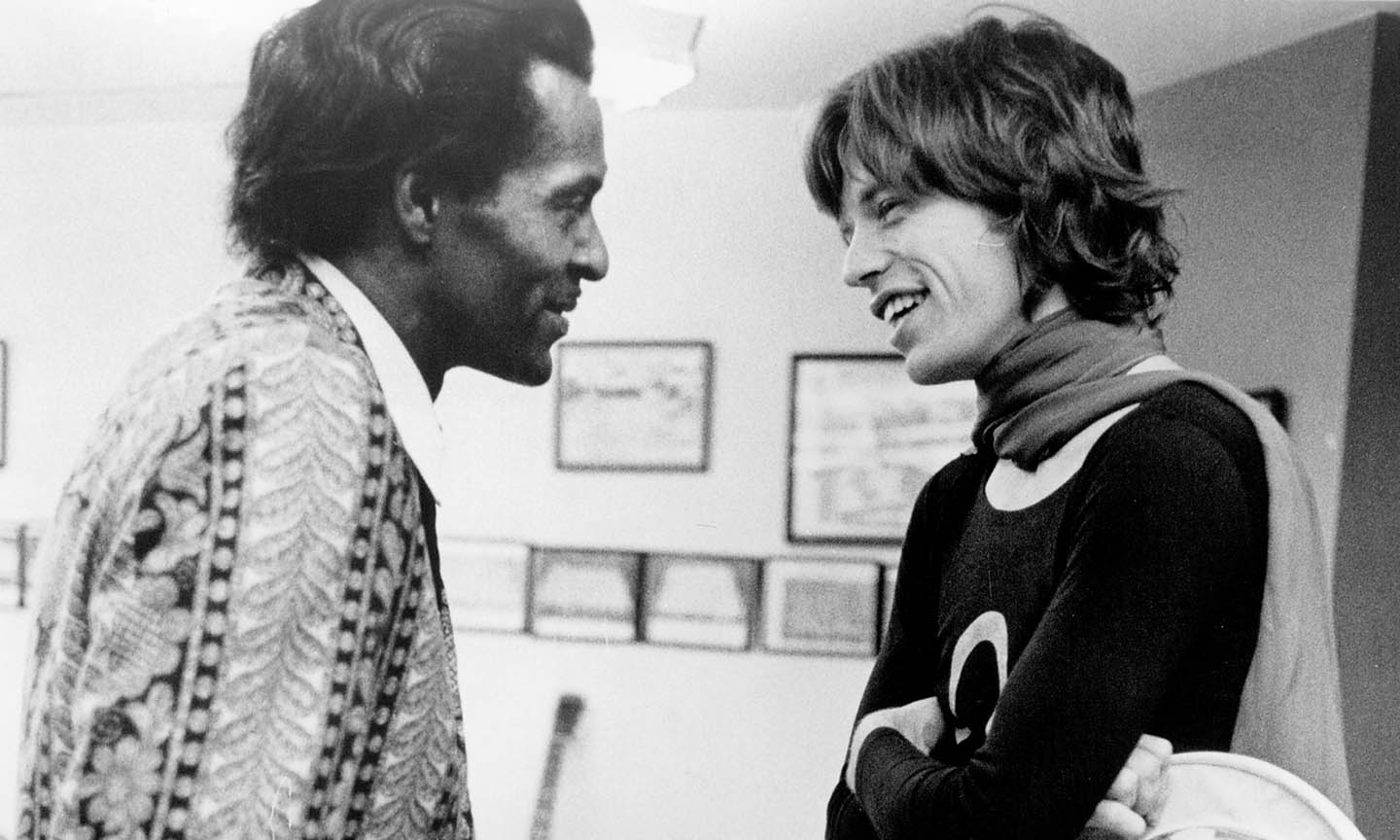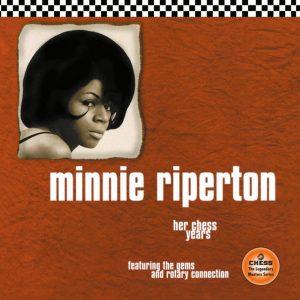“If you don’t know the blues, there’s no point in picking up the guitar and playing rock’n’roll or any other form of popular music,” says Keith Richards. Blues pioneers such as Howlin’ Wolf, John Lee Hooker, Elmore James, Muddy Waters, Chuck Berry, Big Bill Broonzy, and Robert Johnson had a huge impact on the young Rolling Stones, influencing Richards’ guitar licks and Mick Jagger’s vocals and songwriting.
The famous story of how the group got their name dates to 1962, when guitarist Brian Jones rang the Jazz News publication to place an advert for their first gig. When asked what the band’s name was, his eyes went straight to the first song on a Muddy Waters album lying on the floor: “Rollin’ Stone.”
During their own celebrated career, The Rolling Stones have put their own stamp on many of the iconic songs that influenced them. Here’s our guide to some of their most memorable blues covers, revealing the most important songs that influenced The Rolling Stones.
Mannish Boy
Mick Jagger said that the first album he ever bought was Muddy Waters At Newport, and a shared admiration for the blues helped bring about a lifelong friendship. “That’s how Mick and Keith first got close as well, on the train coming back from college,” recalled Ronnie Wood. “They noticed each other’s record collection and it was, ‘Hey, you’ve got Muddy Waters. You must be a good guy, let’s form a band.’” An energetic six-minute version of “Mannish Boy,” taken from a performance at the El Mocambo Tavern, Toronto, in March 1977, was included on the Stones’ live album Love You Live that year. What a thrill it must have been for them on November 22, 1981, in the middle of an American tour, to perform the iconic song with Waters himself, in Chicago, at Buddy Guy’s club.
Little Red Rooster
Jagger, Richards, and Jones were awestruck when, in 1962, they saw Howlin’ Wolf playing in Manchester at the American Folk Blues Festival. Wolf recorded many songs that influenced The Rolling Stones, and, two years after that performance, the band took a blues song to No. 1 on the UK charts for the first time, with a recording of Wolf’s “Little Red Rooster.” “The reason we recorded ‘Little Red Rooster” isn’t because we want to bring blues to the masses,” said Richards at the time. “We’ve been going on and on about blues, so we thought it was about time we stopped talking and did something about it. We liked that particular song, so we released it.” Jones played some energetic bottleneck guitar and Richards improvised on the rhythm guitar parts. Drummer Charlie Watts later revealed that his drum part was inspired by the one on Sam Cooke’s cover version.
I’m A King Bee
When they went into Regent Sound Studios in early 1964 to record their debut album, the Stones agreed that they wanted to do a version of Slim Harpo’s “I’m A King Bee.” They followed Harpo’s arrangements but added a slide-guitar break by Jones. Its importance among the songs that influenced The Rolling Stones is clear: Jagger insists that listeners should always return to the original. “What’s the point in listening to us doing ‘I’m A King Bee’ when you can hear Slim Harpo do it?” he said. The Harpo version is on the first disc of the Confessin’ The Blues compilation.
Little Queenie
“The Greatest Poet Of Rock’n’Roll is an apt title for Chuck Berry,” say the liner notes for Confessin’ The Blues, adding, “once again we have to thank Mick and Keith for opening the door with ‘Come On’ in 1963.” That Chuck Berry track was on their debut single, and the Stones also chose Berry’s song “Carol” for the compilation. “Little Queenie” is a song of Berry’s that they frequently perform live. One great version, from their show at Madison Square Garden in November 1969, was captured for the album Get Yer Ya-Ya’s Out! The Rolling Stones In Concert, which was the first live album to reach No. 1 in the UK.
Down The Road Apiece
Chuck Berry recorded a guitar-based version of “Down The Road Apiece” but the most memorable version of Don Raye’s 1940 boogie-woogie classic was by pianist Amos Milburn. When the Stones covered the song on their second album, 1965’s The Rolling Stones No. 2, they combined the dynamic guitar playing of Richards and Jones with some driving blues piano from Ian Stewart. The founding member, who became the band’s road manager in 1963, also loved playing a piano version of Big Bill Broonzy’s “Key To The Highway.”
Stop Breakin’ Down Blues
“When I first heard ‘Stop Breakin’ Down Blues,” I said to Brian, ‘Who’s that?’” Keith Richards wrote. “The guitar playing – it was almost like listening to Bach. You know, you think you’re getting a handle on playing the blues, and then you hear Robert Johnson – some of the rhythms he’s doing and playing and singing at the same time, you think, This guy must have three brains. You want to know how good the blues can get? Well, this is it.” Johnson was not only a superb guitarist and singer, he was also a fine songwriter. He wrote “Stop Breakin’ Down Blues” during a recording session in Dallas, Texas. The Stones recorded a version for their 1971 album Exile On Main St, which had some great slide guitar by Mick Taylor. They also released a live version with Robert Cray on their concert DVD The Rolling Stones: Voodoo Lounge Live.
Love In Vain Blues
Johnson is one of the band’s biggest inspirations, penning many songs that influenced The Rolling Stones, and their acoustic, country music-like version of his classic “Love In Vain Blues” is one of the highlights of their 1969 album, Let It Bleed. “‘Love In Vain” was such a beautiful song,” said Richards, who put in extra chords to differentiate the Stones’ version from the original. “Mick and I both loved it, and at the time I was working and playing around with Gram Parsons, and I started searching around for a different way to present it, because if we were going to record it there was no point in trying to copy the Robert Johnson style or ways and styles. We took it a little bit more country, a little bit more formalized, and Mick felt comfortable with that.” Live performances of the song appear on Get Yer Ya-Ya’s Out! and 1995’s Stripped.
The Prodigal Son
When the Stones recorded their 1968 album, Beggars Banquet, the only song not written by Jagger and Richards was “Prodigal Son,” which had been composed by Mississippi bluesman Reverend Robert Wilkins back in 1929. Happily, Wilkins was 72 at the time the Stones put his song in the limelight and he enjoyed a boost from the royalties that helped fund his work as a religious minister.
You Gotta Move
One of the blues songs that influenced The Rolling Stones the most is Mississippi Fred McDowell’s haunting “You Gotta Move.” The band have returned to it time and time again, and the version they cut at Muscle Shoals Sound Studios in Alabama for Sticky Fingers is powerful and brooding. Taylor said he modeled his electric slide guitar on McDowell’s. “‘You Gotta Move’ was this great Fred McDowell song that we used to play all the time in the studio,” said Taylor. “I used a slide on that – on an old 1954 Fender Telecaster – and that was the beginning of that slide thing I tried to develop with the Stones.”
Ride ’Em On Down
Eddie Taylor recorded “Ride ’Em On Down” in 1955 for the Vee-Jay label, and the song tests a harmonica player’s skill. In November 2016, the Stones released a high-voltage version of the song as a one-track limited edition electric-blue 10” vinyl for Record Store Day, which featured a scorching mouth organ solo from Jagger. “This is the best record Mick Jagger has ever made,” Richards said of the singer’s harmonica skills. “It was just watching the guy enjoying doing what he really can do better than anybody else… And also, the band ain’t too shabby.”
Rock Me Baby
“Rock Me Baby” has been covered hundreds of times, including by Lightnin’ Hopkins and Jimi Hendrix, but the most celebrated version is by BB King. It is King’s version that the Stones emulate on their album Live Licks. In 2003, when they were recording the album, they were joined during a concert in Leipzig by Angus and Malcolm Young, members of the Australian band AC/DC, for a cracking live version of the song.
Blue & Lonesome
The band’s debt to the blues was writ large on the 2016 album Blue & Lonesome, which earned the Stones a Grammy nomination. A superb tribute album to many of the songs that influenced The Rolling Stones, it’s like an extended love song to the blues from Jagger, Richards, Woods, and Watts. Produced by Don Was, it includes the title track, originally recorded by Little Walter. The album also contains cracking versions of a host of other songs the group chose for Confessin’ The Blues, including “Hoo Doo Blues, “Just Your Fool,” “All Of Your Love,” “I Can’t Quit You Baby,” “Little Rain,” “Commit A Crime” and “I Gotta Go.”
Boogie Chillen
John Lee Hooker was a blues hero to the young Stones and during their Steel Wheels tour, in 1989, they got the chance to perform his seminal hit “Boogie Chillen” with the great singer and guitarist himself during a stop in Atlantic City, New Jersey. “Thank you John Lee Hooker,” was the heartfelt shout from Richards at the end of the song.
You Can’t Judge A Book By Its Cover
Bo Diddley was a genuine rock’n’roll pioneer, and his version of the Willie Dixon composition “You Can’t Judge A Book by Its Cover” is one of several Bo Diddley songs that influenced The Rolling Stones. At the urging of Brian Jones, they cut a demo version in October 1962, three months after the original was released. Diddley cut his version in Chicago; the Stones recorded theirs at Curly Clayton’s Sound Studios in Highbury. Two years later the Stones chose another Diddley hit, “Mona,” for their Decca Records debut. Perhaps their favorite Diddley song, though, is “Doing The Craw-Daddy.” They used to perform 20-minute versions of it at the Station Hotel in Richmond, London, where they were the house band in 1963. The venue soon became known as The Crawdaddy Club.
Dust My Broom
When Jagger and Richards first met Jones, he used the name Elmore Jones, which was amended to Elmo Lewis, after the famous blues singer and guitarist Elmore James. They all loved his version of “Dust My Broom,” which was recorded with Sonny Boy Williamson II on harmonica. For their first gig, at the Marquee Jazz Club, in 1962, the Stones borrowed money from Jagger’s dad to rent equipment; Richards later recalled the thrill of playing “Dust My Broom” in a line-up that included pianist Ian Stewart, bassist Dick Taylor, and drummer Mick Avory.
Bright Lights, Big City
When the Stones were deciding on the setlist for their first session at IBC Recording Studios in London’s Portland Place, in March 1963, the band all agreed to record Jimmy Reed’s classic “Bright Lights, Big City.” The songs they cut that day on a two-track machine, including another Reed song called “Honey What’s Wrong,” were deemed too uncommercial to release, but they were clearly songs that influenced The Rolling Stones in their formative years. “We all loved these tracks, but it was Brian who was really bowled over by them,” recalled Bill Wyman. “He was more proud of them than anything else we ever recorded. Years later he would often play these songs for friends or acquaintances that would come to visit.” The acetate of the song was later sold at Sotheby’s.
Listen to the best of The Rolling Stones on Apple Music and Spotify.




